Revealed: How Five of TV’s Biggest Hit Shows Do When It Comes to Advertising Attention
Does a show’s popularity translate to engagement during advertising? In order to find out, we used data from iSpot.tv to take a look at five popular shows, one from each of the biggest broadcast networks, to see what kind of attention is being translated to the ads. (Data below is for Jan. 1, 2017-Apr. 5, 2017)This is Us (NBC)Ahh, everyone’s favorite new drama — but is it delivering for advertisers? Well, the average view rate (AVR) for ads during This is Us was 92.1% (view rate is the percentage of an ad that, on average, was viewed across all airing of that ad). And 87.7% of the time, people watched the ads from the start all the way through to the third quartile-to-completion window. Not too shabby! 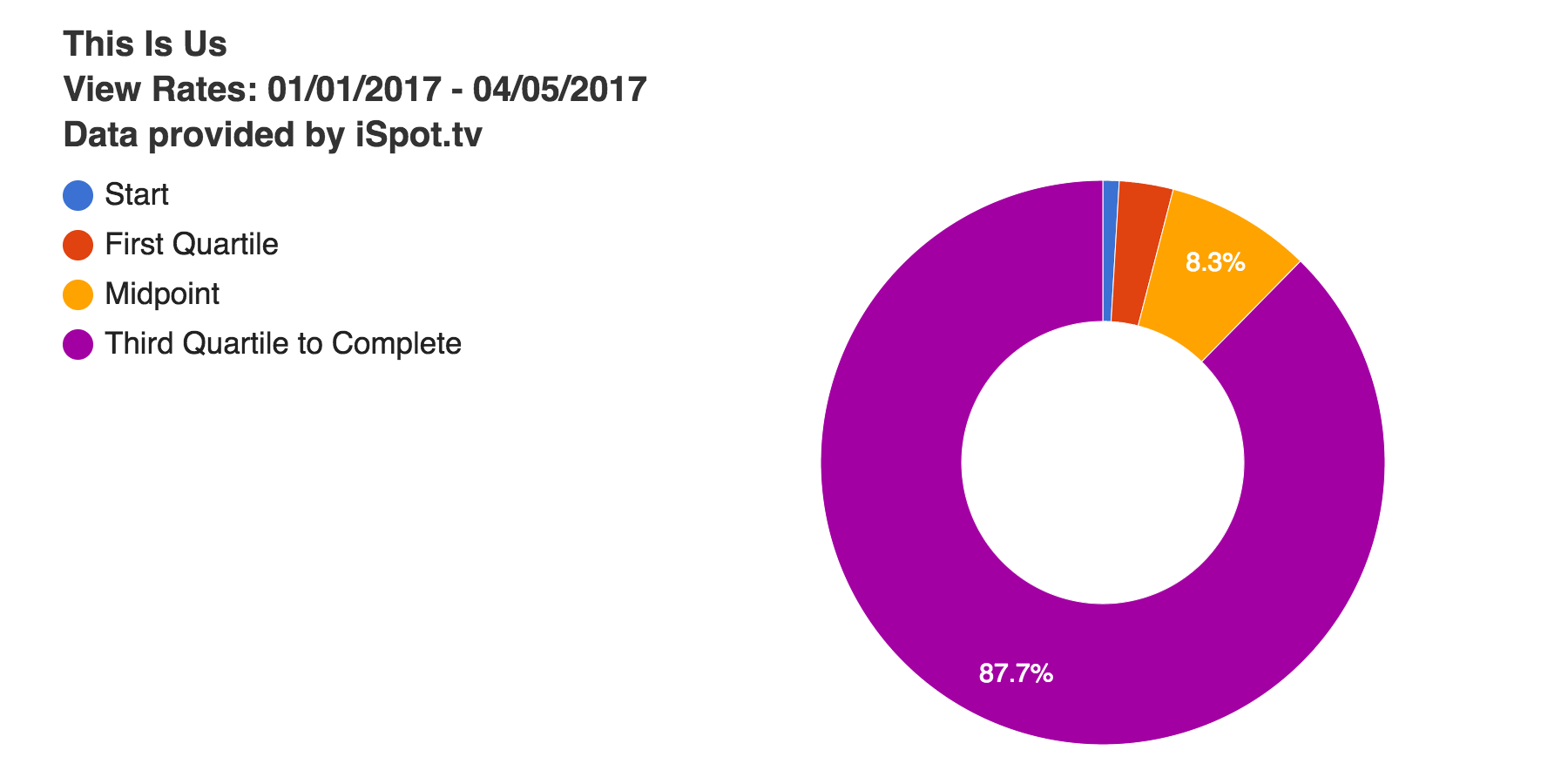 When it comes to ad impressions, 85.1% of them were made during live or same-day viewings (meaning that the majority of people weren’t DVRing the show for later in the week).
When it comes to ad impressions, 85.1% of them were made during live or same-day viewings (meaning that the majority of people weren’t DVRing the show for later in the week). 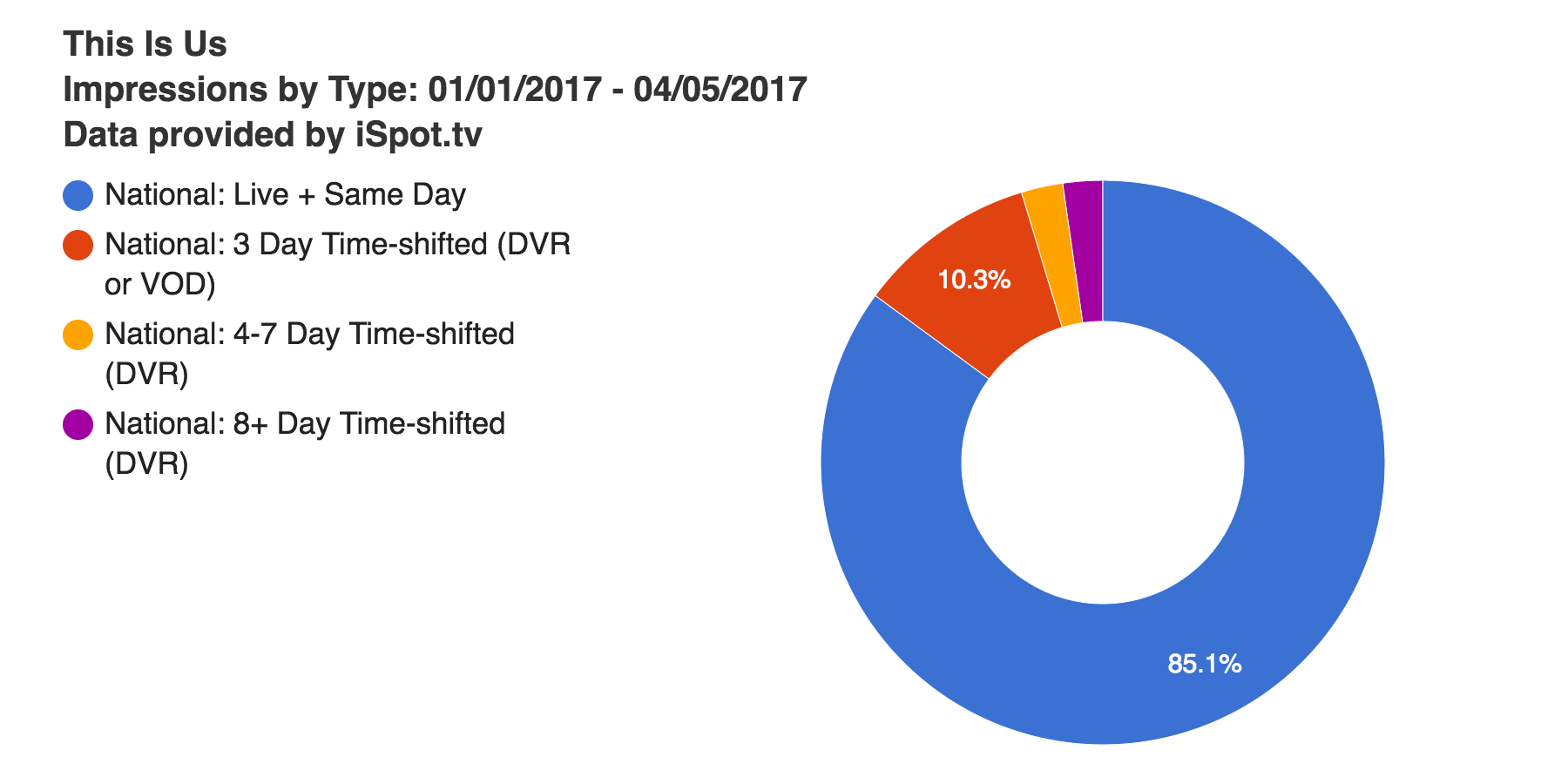 The most popular ad based on digital share of voice (DSOV) that’s aired during This is Us was Starbucks’ socially-conscious “A Year of Good,” with 19.83% of the DSOV. Mmmm...how about some warm and fuzzies with your $5 mocha latte? The Bachelor (ABC)It’s the reality TV behemoth that somehow keeps people coming back, even after 21 seasons. Overall, ads during The Bachelor this year so far sport an AVR of 91.71%, with 86.8% third-quartile-to-completion viewing, putting it just barely behind This is Us.
The most popular ad based on digital share of voice (DSOV) that’s aired during This is Us was Starbucks’ socially-conscious “A Year of Good,” with 19.83% of the DSOV. Mmmm...how about some warm and fuzzies with your $5 mocha latte? The Bachelor (ABC)It’s the reality TV behemoth that somehow keeps people coming back, even after 21 seasons. Overall, ads during The Bachelor this year so far sport an AVR of 91.71%, with 86.8% third-quartile-to-completion viewing, putting it just barely behind This is Us.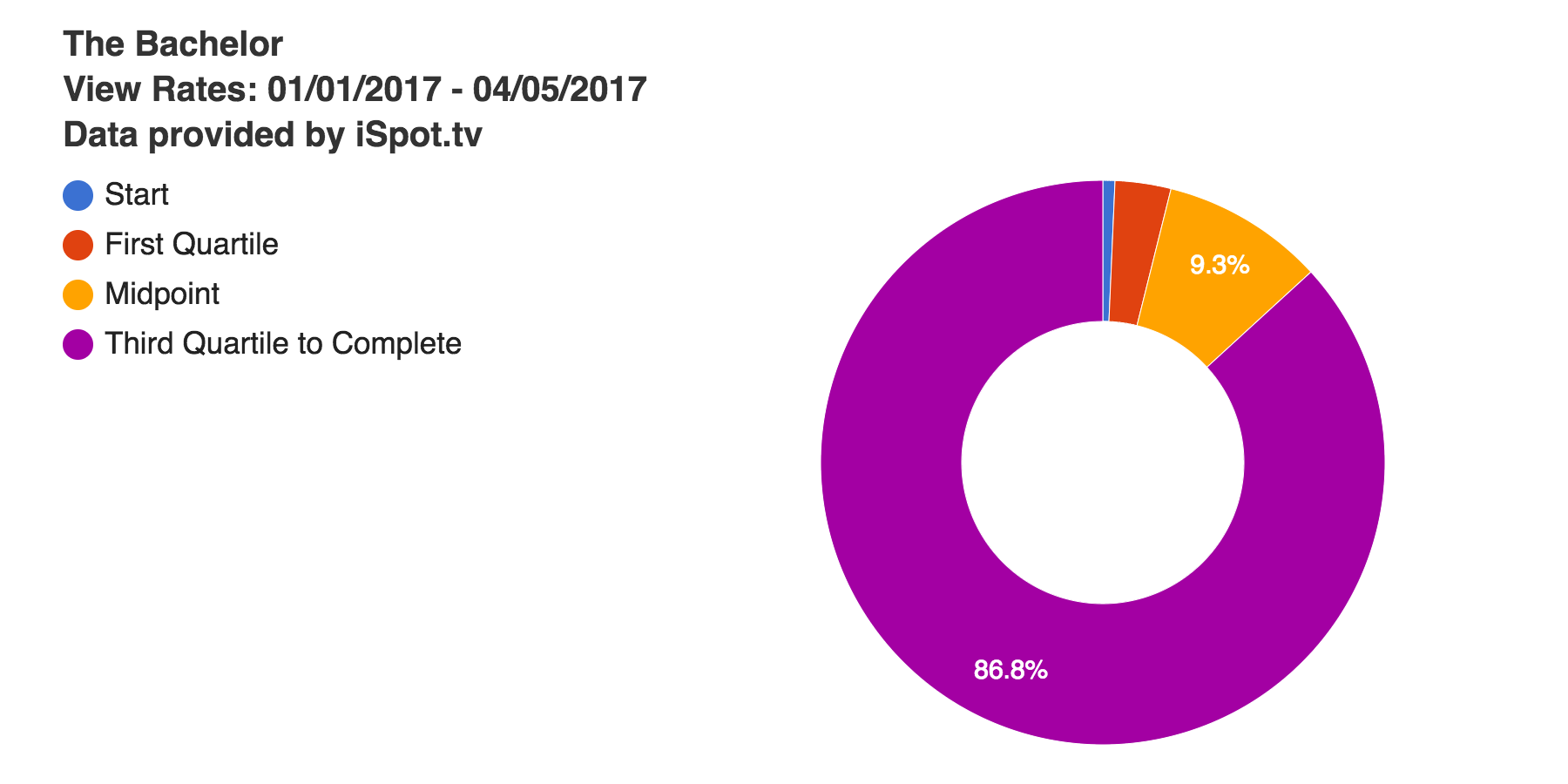 For the ad impressions, 86.4% of them were made during live or same-day viewings.
For the ad impressions, 86.4% of them were made during live or same-day viewings.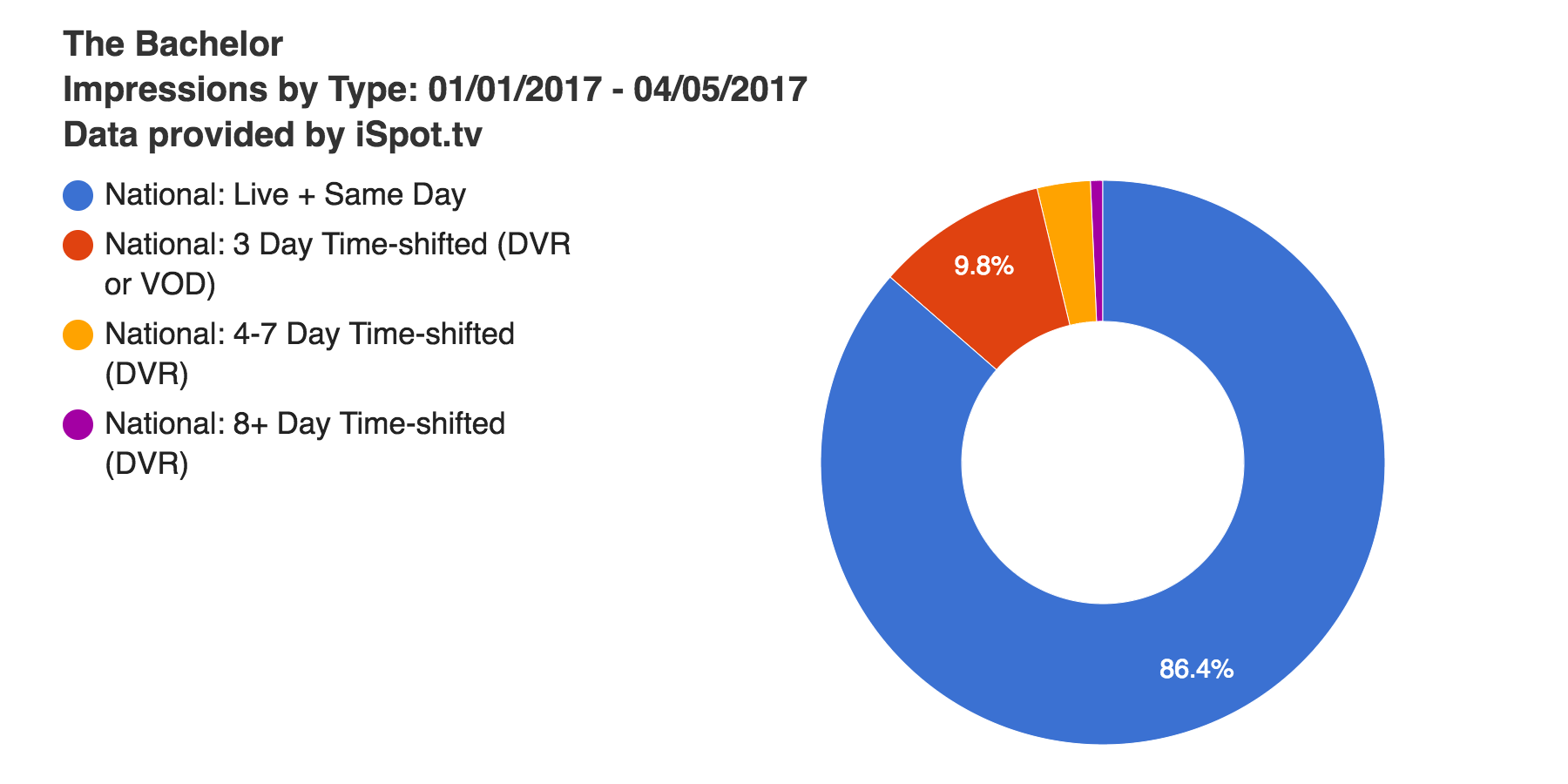 Looking at individual commercials, the trailer for Fifty Shades Darker was the most talked about during episodes of The Bachelor, with 5.53% of the DSOV. Somehow...this makes sense. The Big Bang Theory (CBS)This sitcom isn’t just for nerds, as its astounding ratings prove time and again. So far this year, the AVR for is ads is 91.53%, with 83.3% third-quartile-to-completion viewing and an impressive 94.4% of impressions happening live or same-day.
Looking at individual commercials, the trailer for Fifty Shades Darker was the most talked about during episodes of The Bachelor, with 5.53% of the DSOV. Somehow...this makes sense. The Big Bang Theory (CBS)This sitcom isn’t just for nerds, as its astounding ratings prove time and again. So far this year, the AVR for is ads is 91.53%, with 83.3% third-quartile-to-completion viewing and an impressive 94.4% of impressions happening live or same-day.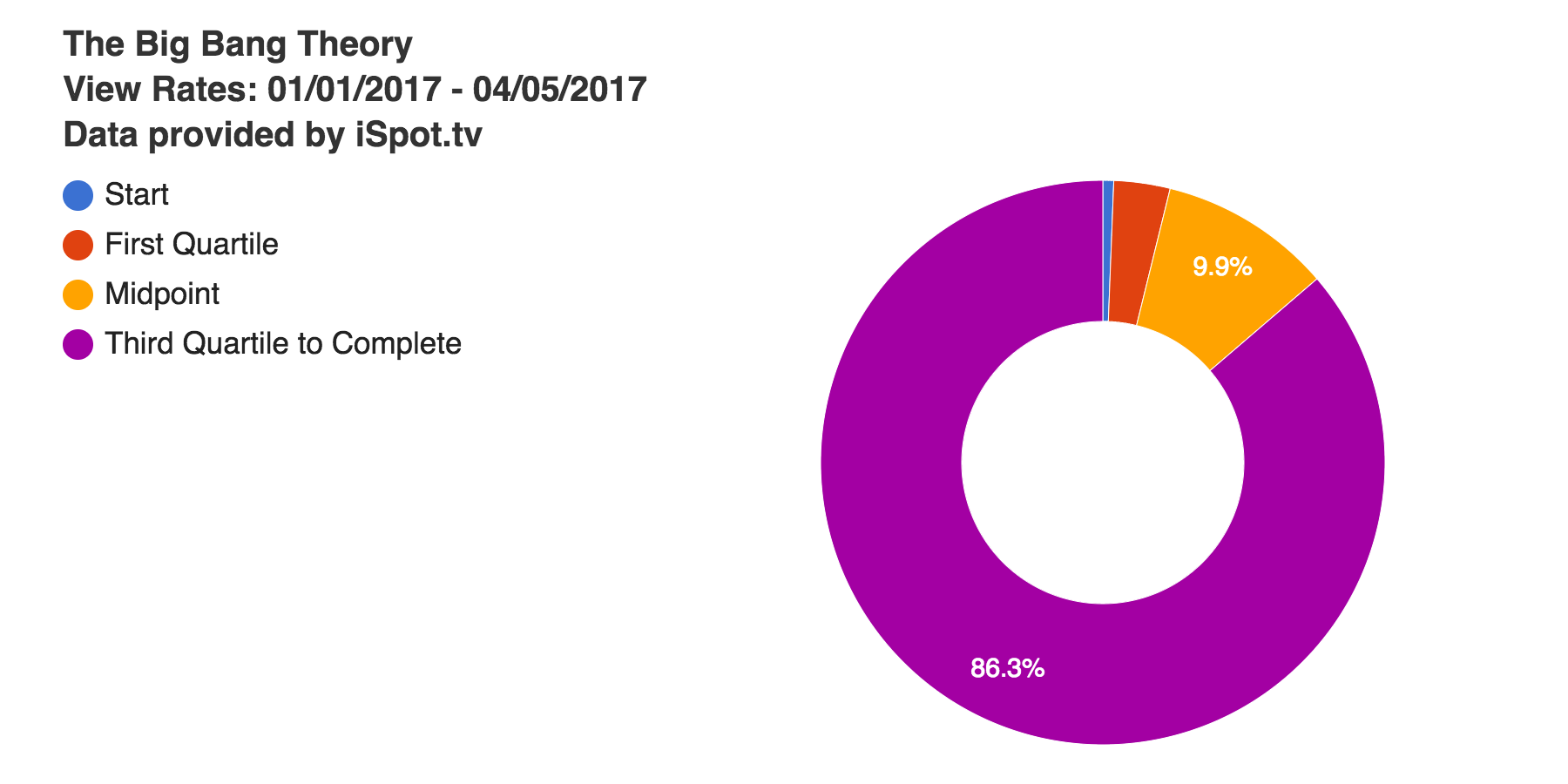
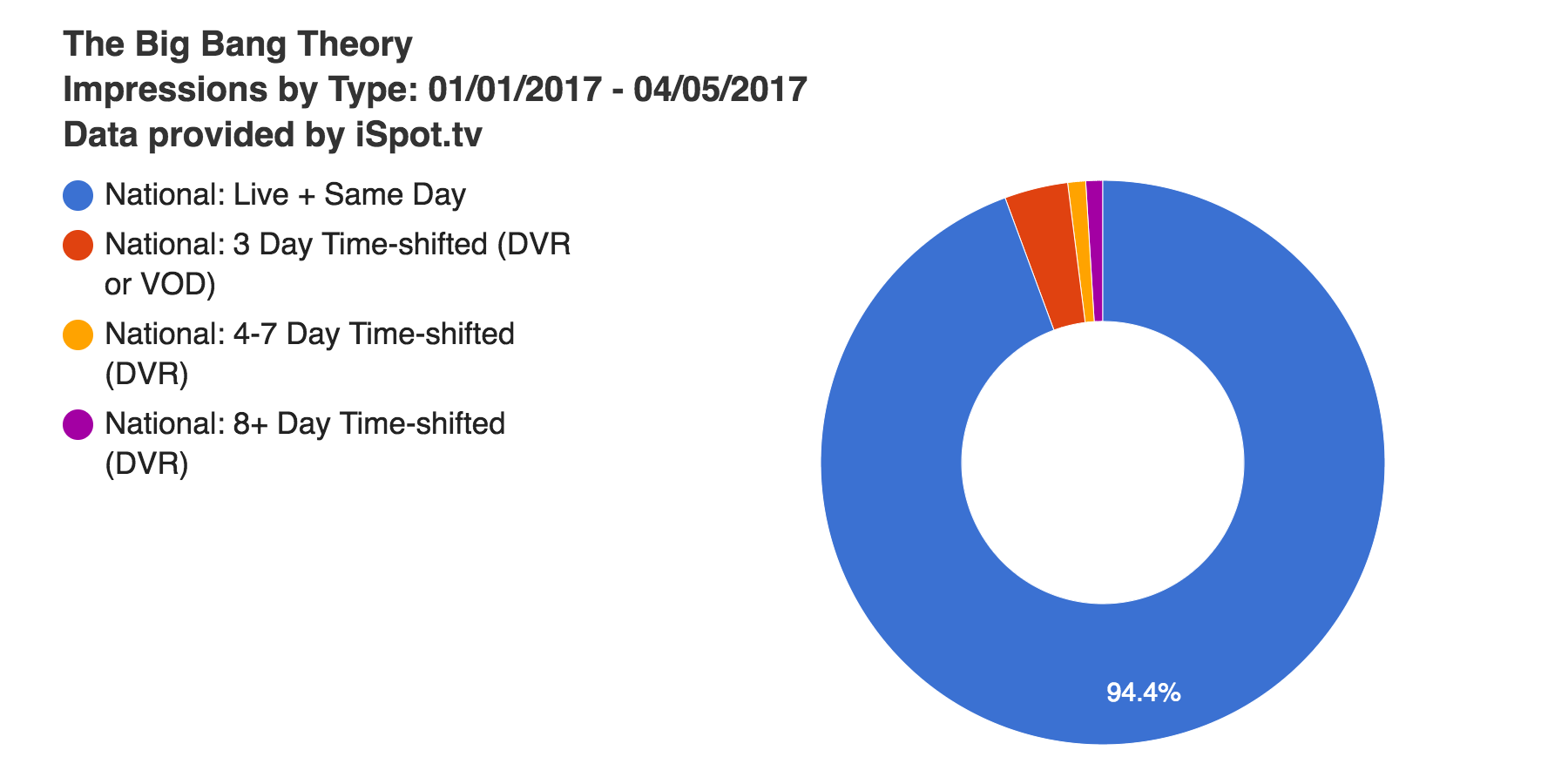 The buzziest ad (as ranked by DSOV) that’s aired during BBT so far this year is Walmart’s “The Best Things in Life Are Free.”24: Legacy (Fox)This series is the latest spinoff of the much-beloved action thriller 24 (the show has had other semi-revivals including the 12-episode 24: Live Another Day back in 2014). The AVR for the show’s ads so far this year is lower than the others, 90.86%, and has a 84.1% third-quartile-to-completion rate. It also has a higher percentage of impressions that occur within 3-day time shifted views than the other shows.
The buzziest ad (as ranked by DSOV) that’s aired during BBT so far this year is Walmart’s “The Best Things in Life Are Free.”24: Legacy (Fox)This series is the latest spinoff of the much-beloved action thriller 24 (the show has had other semi-revivals including the 12-episode 24: Live Another Day back in 2014). The AVR for the show’s ads so far this year is lower than the others, 90.86%, and has a 84.1% third-quartile-to-completion rate. It also has a higher percentage of impressions that occur within 3-day time shifted views than the other shows. 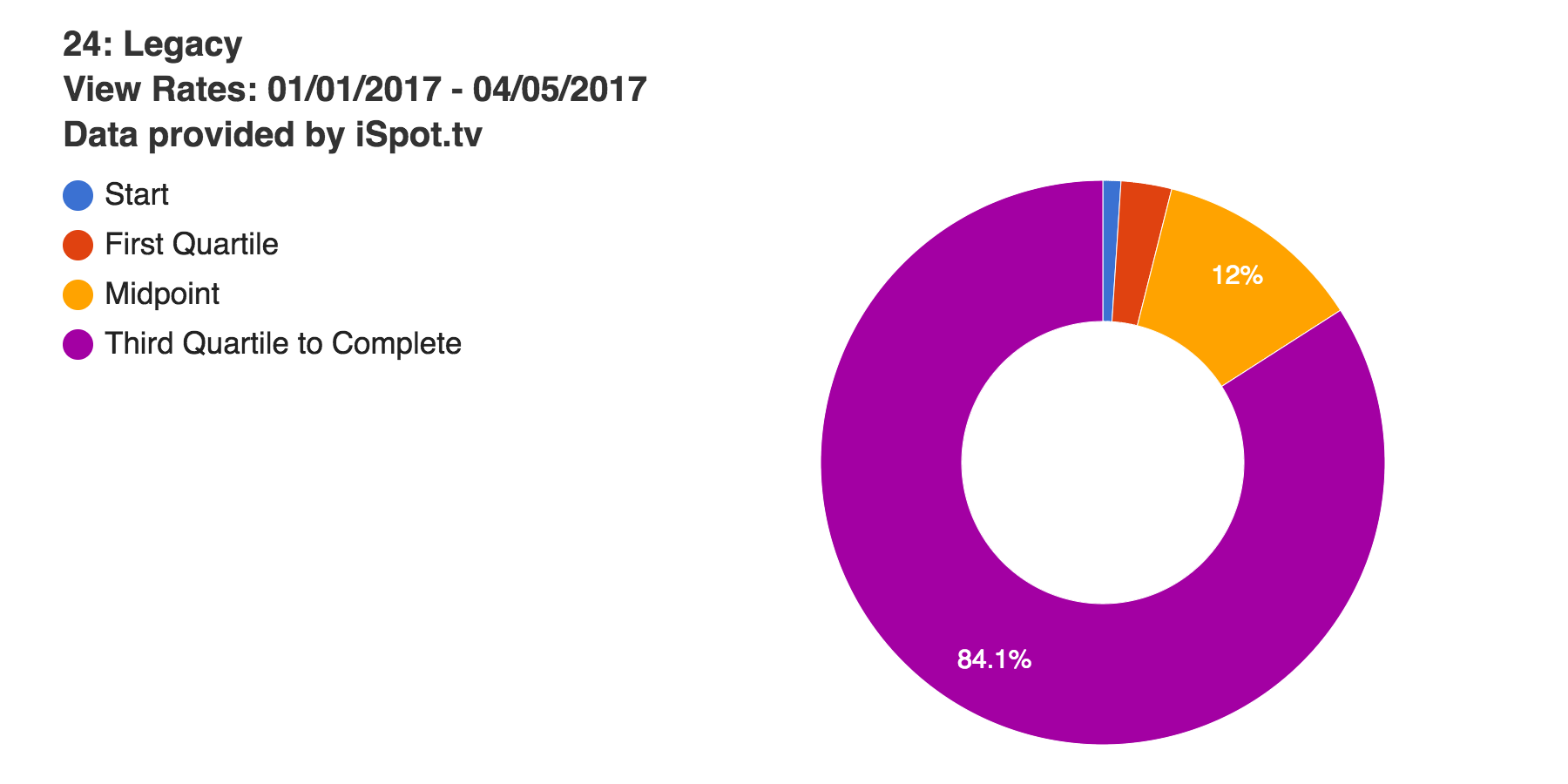
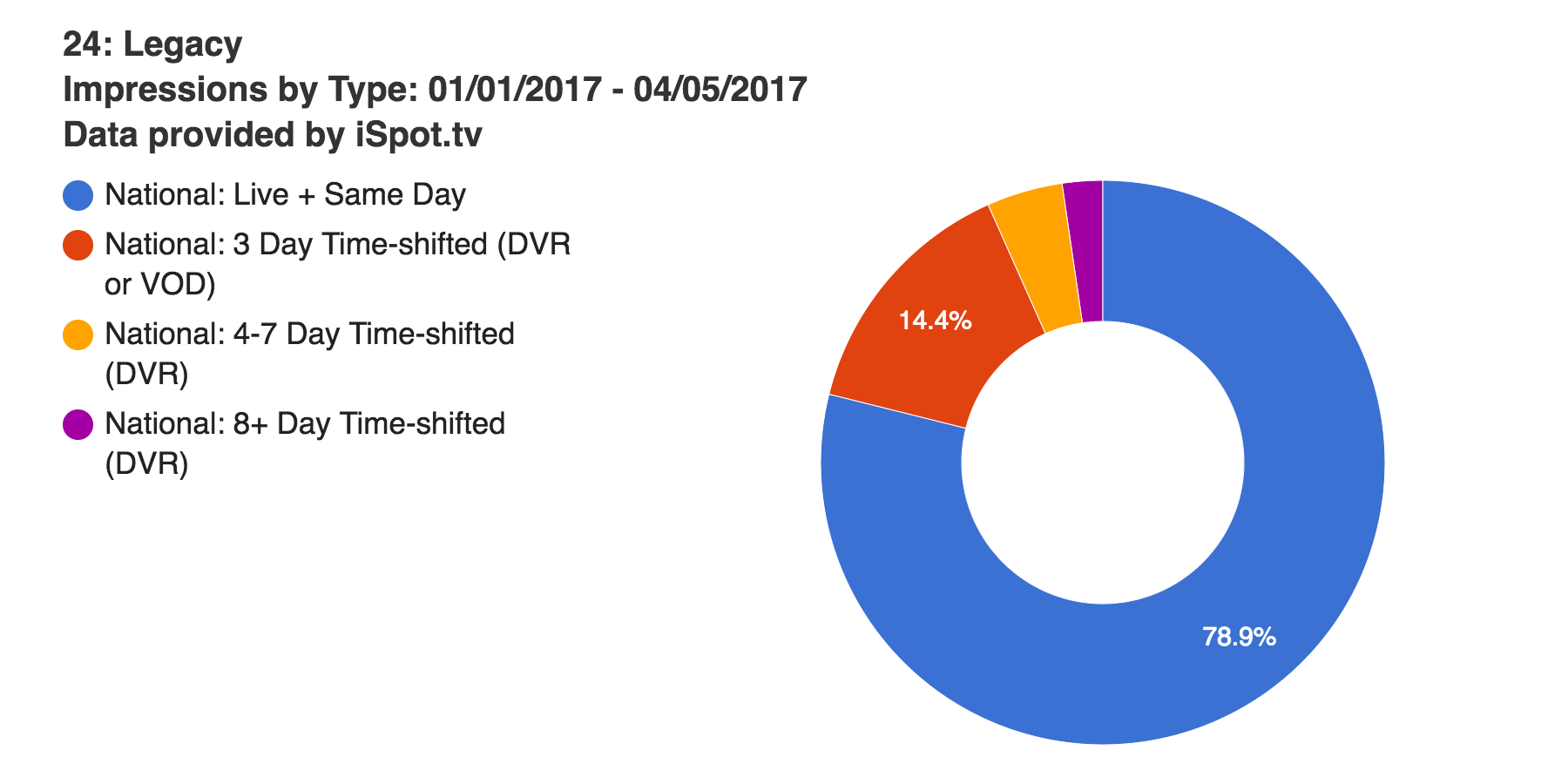 Apple takes first place for the commercial with highest digital engagement, with a whopping 20.57% DSOV during the series so far this year. Its iPhone 7 ad featuring music from Marian Hill obviously had viewers grooving. The Flash (The CW)Who doesn’t love a good comic book spin-off? But although ads during The Flash have had a higher AVR than 24: Legacy, (91.83%) so far this year, The Flash also has the highest percentage of 3-day time-shifted viewing of shows in this article (23%). Third-quartile-to- completion viewing comes in at 86.5%, right on par with the other shows.
Apple takes first place for the commercial with highest digital engagement, with a whopping 20.57% DSOV during the series so far this year. Its iPhone 7 ad featuring music from Marian Hill obviously had viewers grooving. The Flash (The CW)Who doesn’t love a good comic book spin-off? But although ads during The Flash have had a higher AVR than 24: Legacy, (91.83%) so far this year, The Flash also has the highest percentage of 3-day time-shifted viewing of shows in this article (23%). Third-quartile-to- completion viewing comes in at 86.5%, right on par with the other shows. 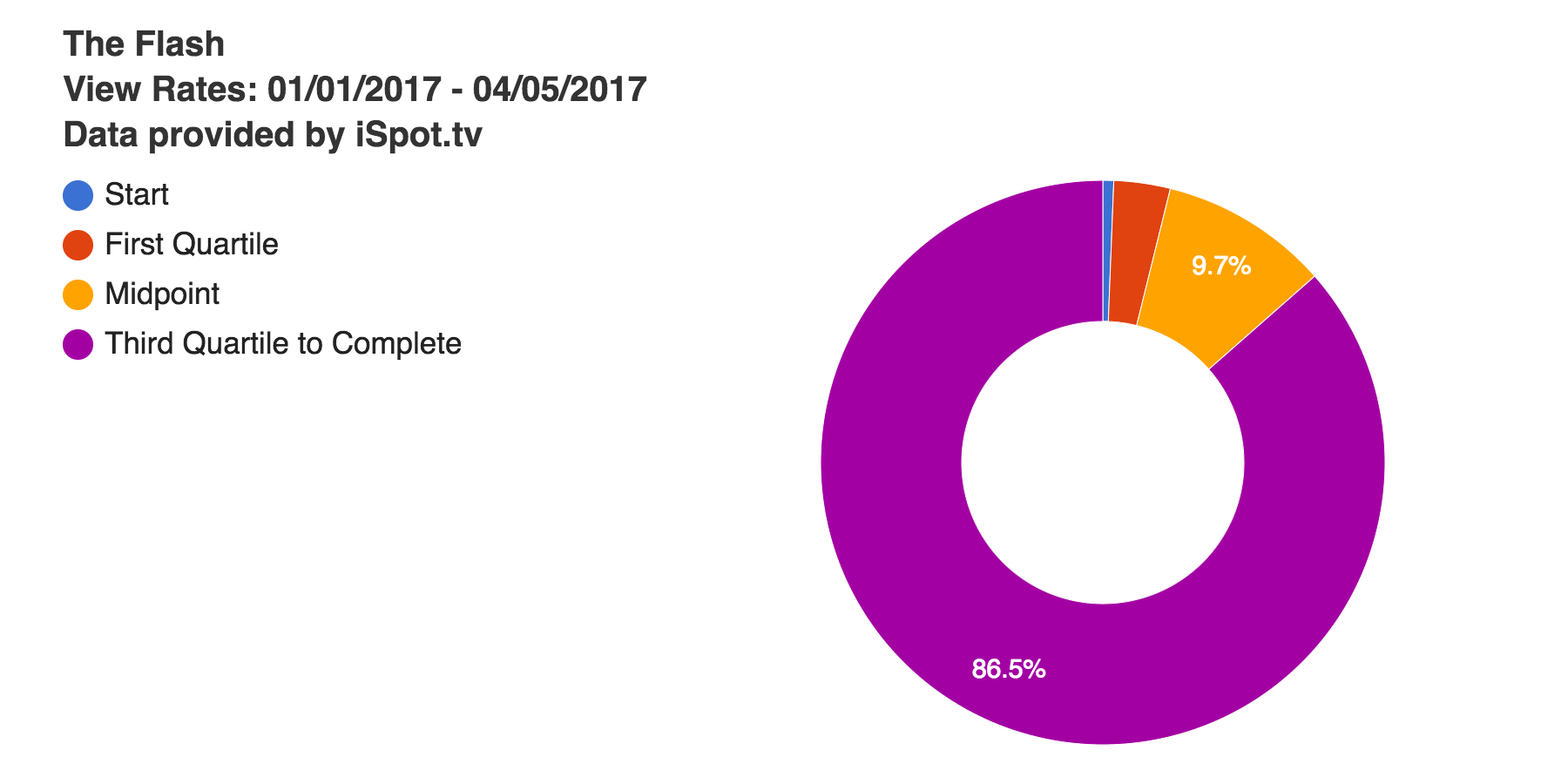
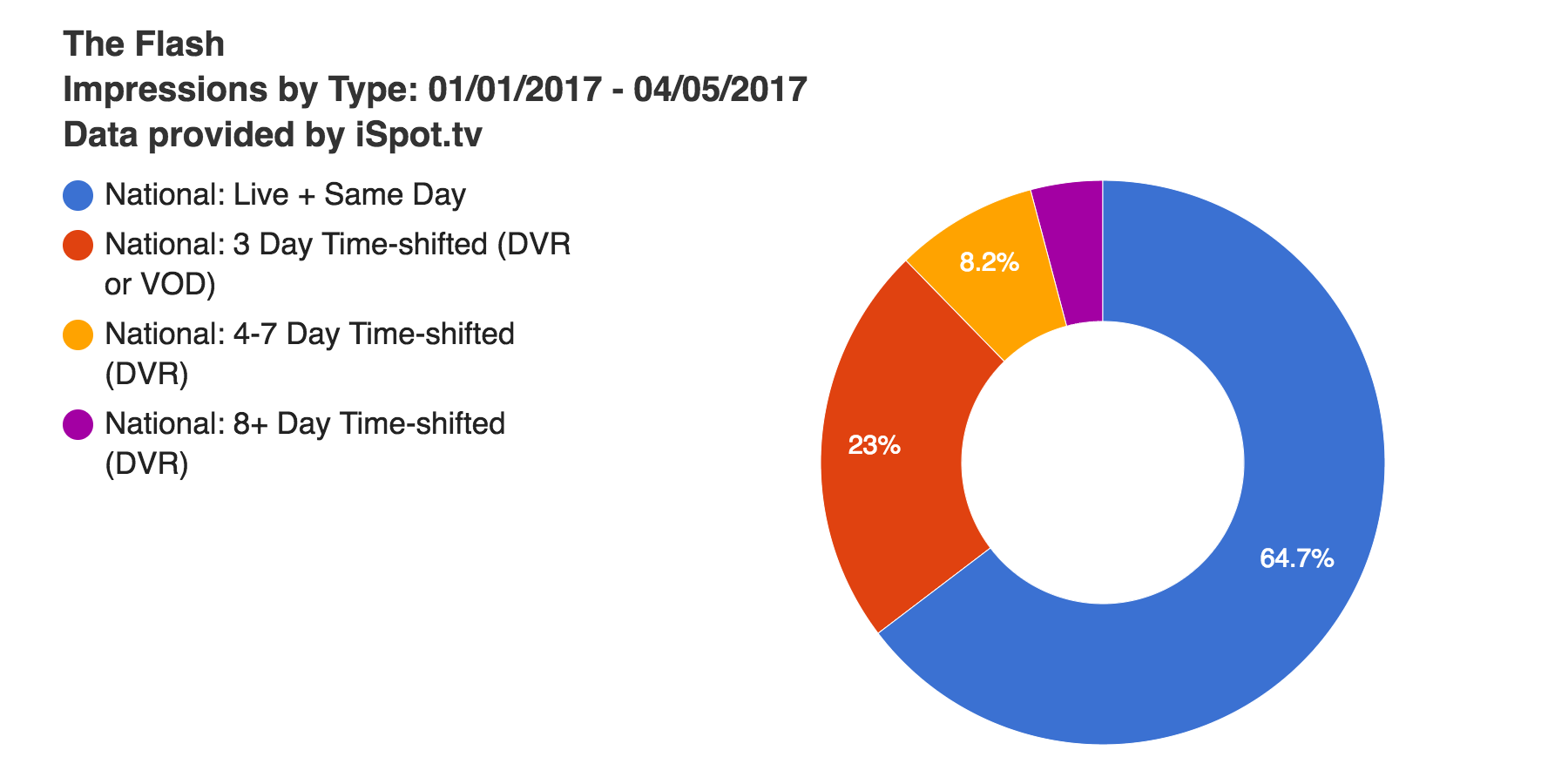 Once again Apple and Marian Hill take the cake for the most buzzed-about ad (14.81% DSOV during The Flash). I mean, it makes sense — that song is super catchy, and the ad is fairly cinematic and, dare I say, beautiful in its own special way?
Once again Apple and Marian Hill take the cake for the most buzzed-about ad (14.81% DSOV during The Flash). I mean, it makes sense — that song is super catchy, and the ad is fairly cinematic and, dare I say, beautiful in its own special way?
So as a whole, what do all these data actually mean? The bottom line is that, at least for some of the biggest hit shows on TV, the AVR and time-shift data both paint an encouraging picture: people are still mostly watching the shows live — and watching the commercials too.

